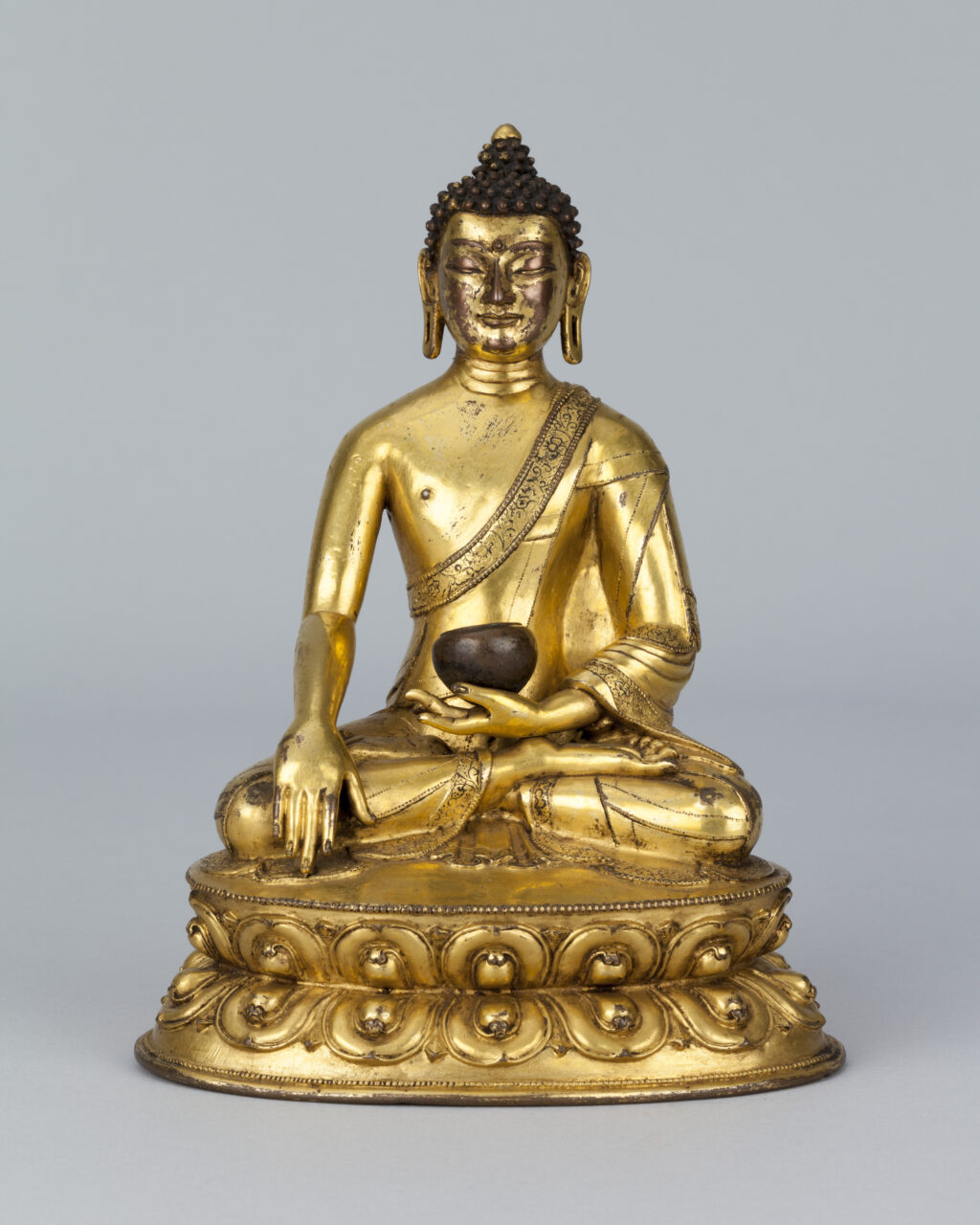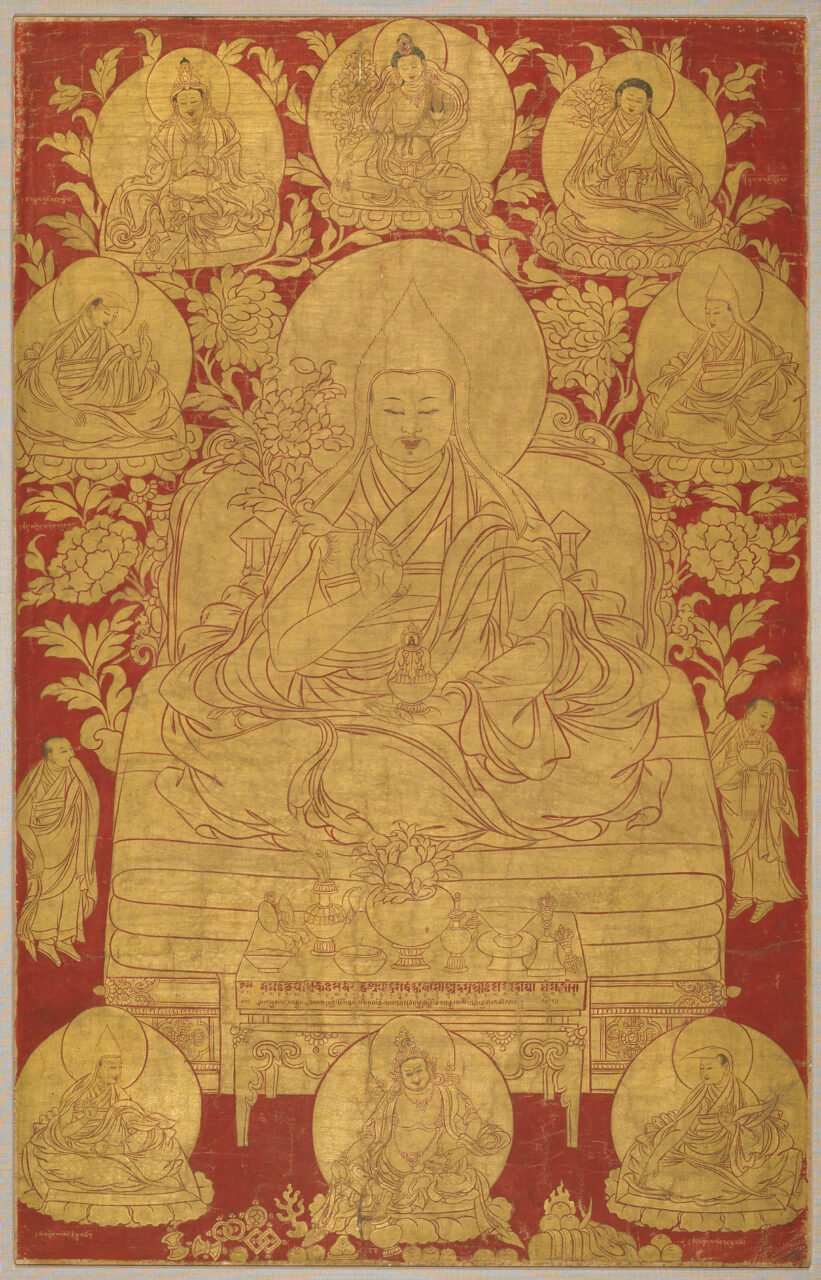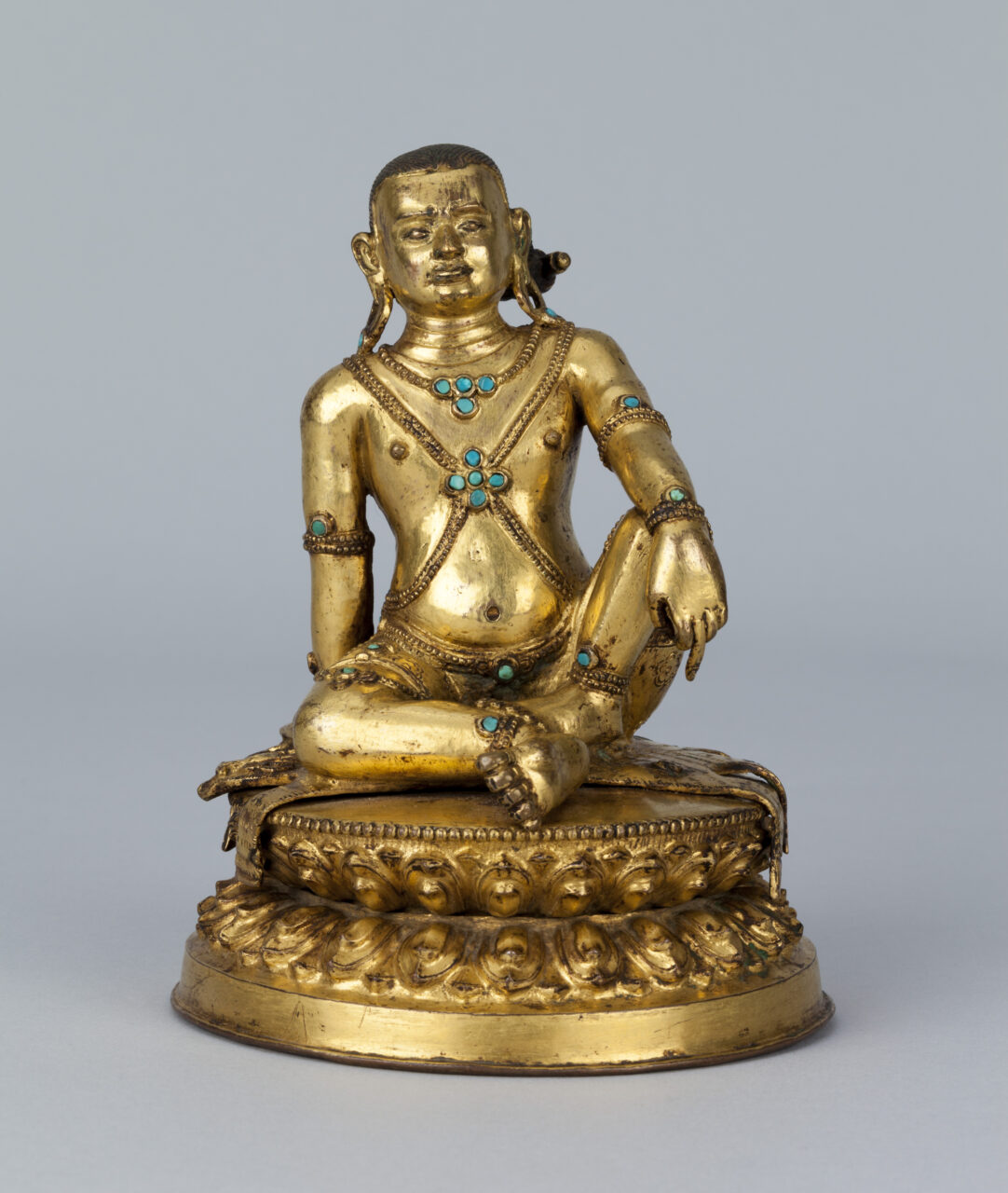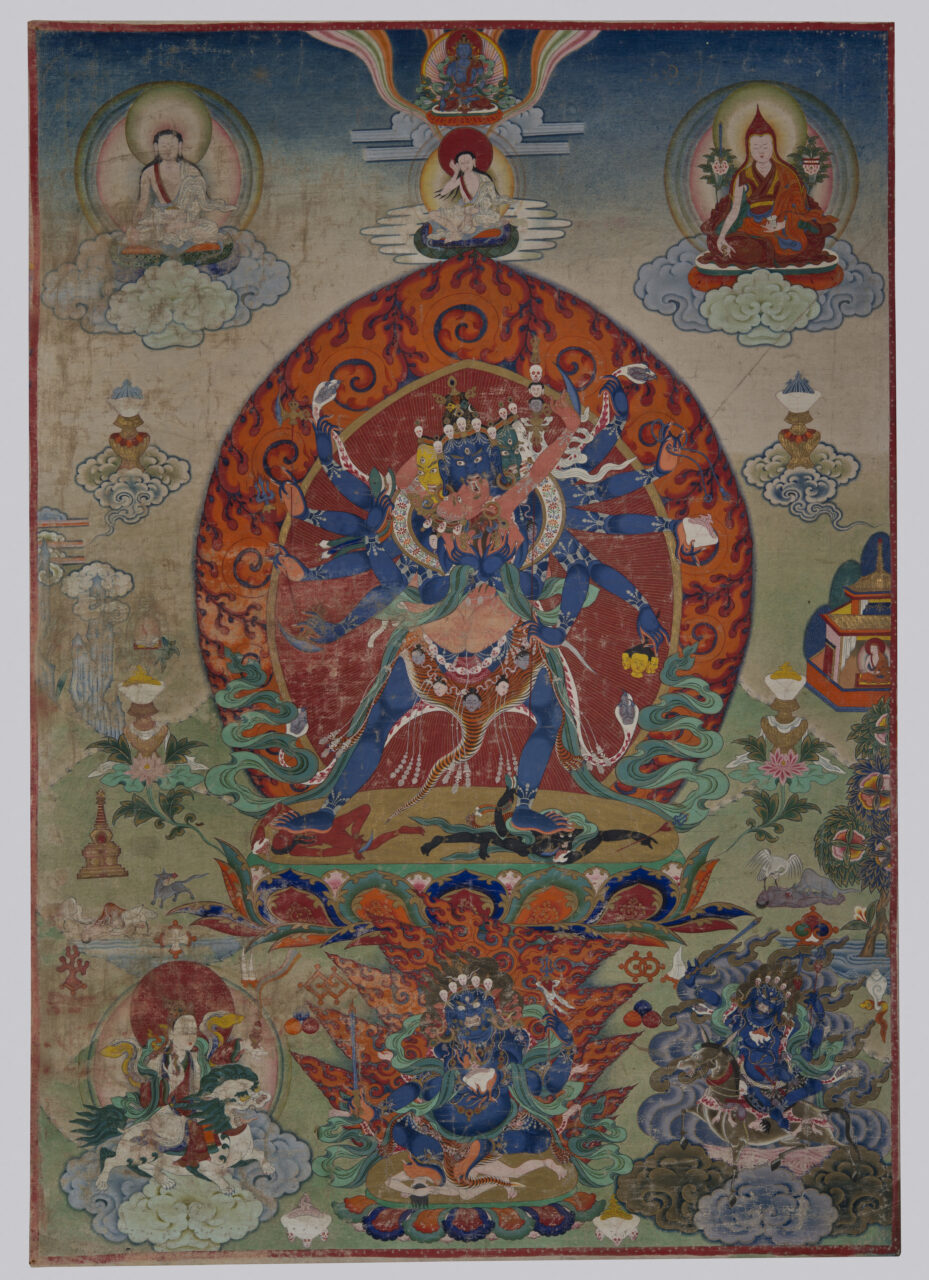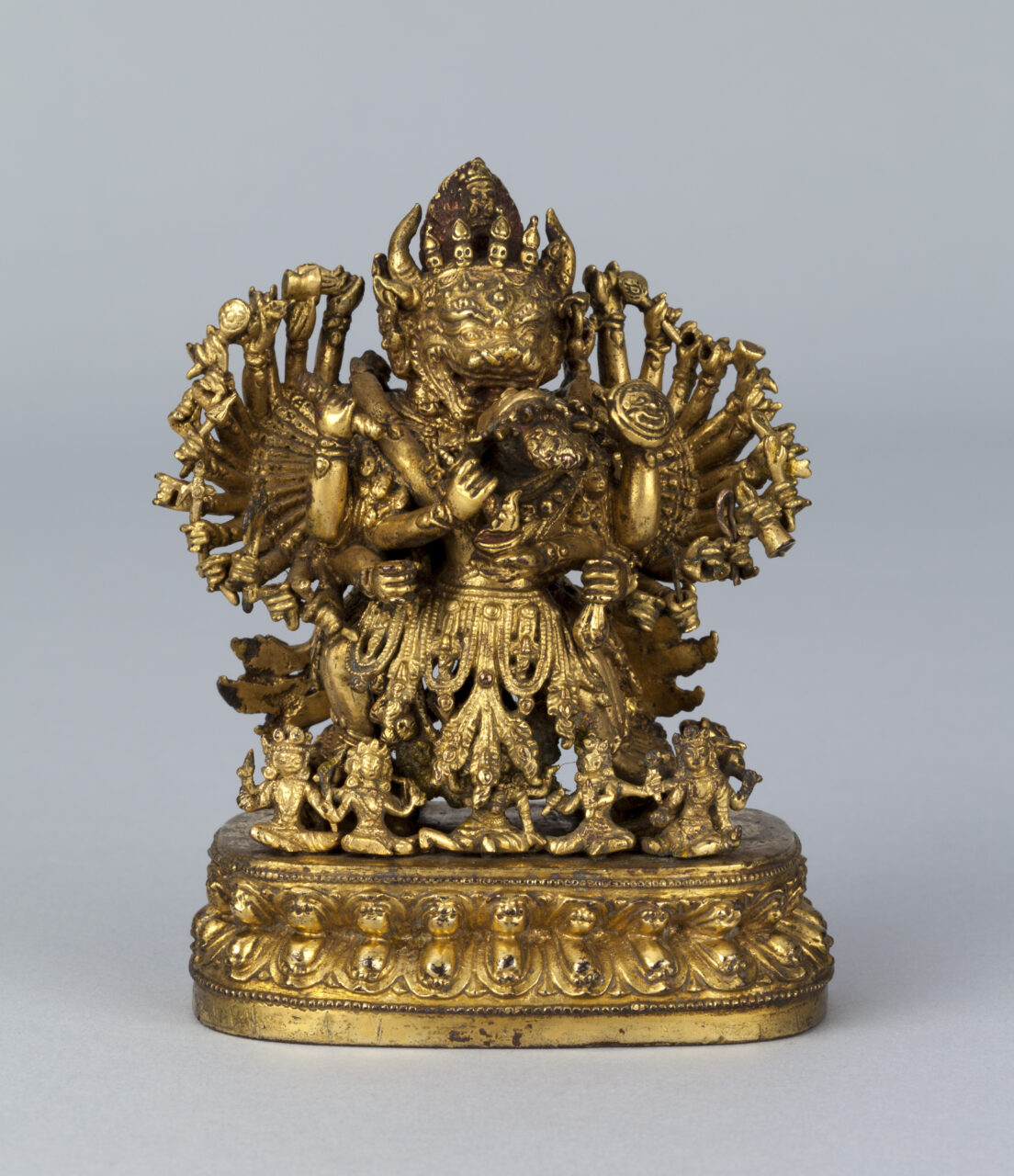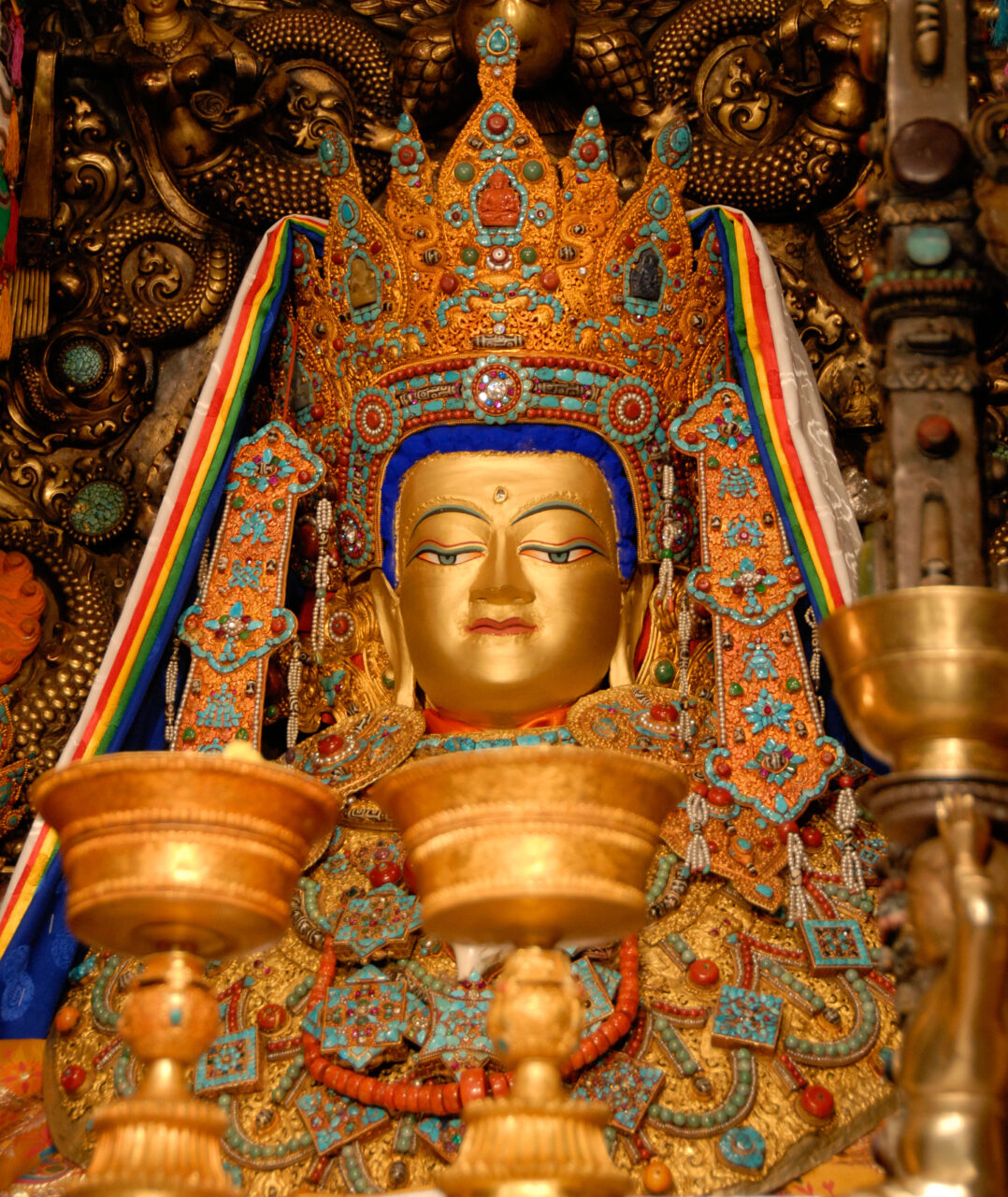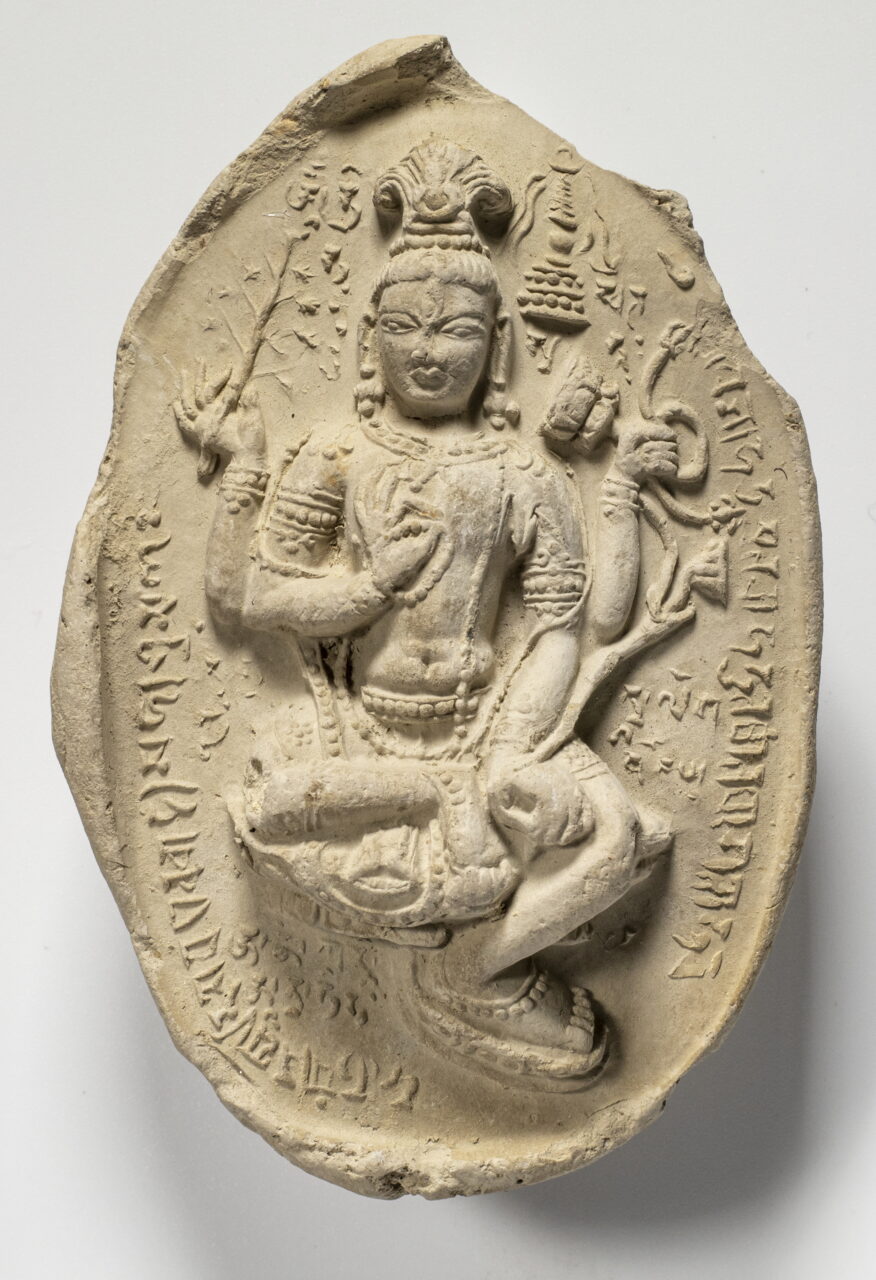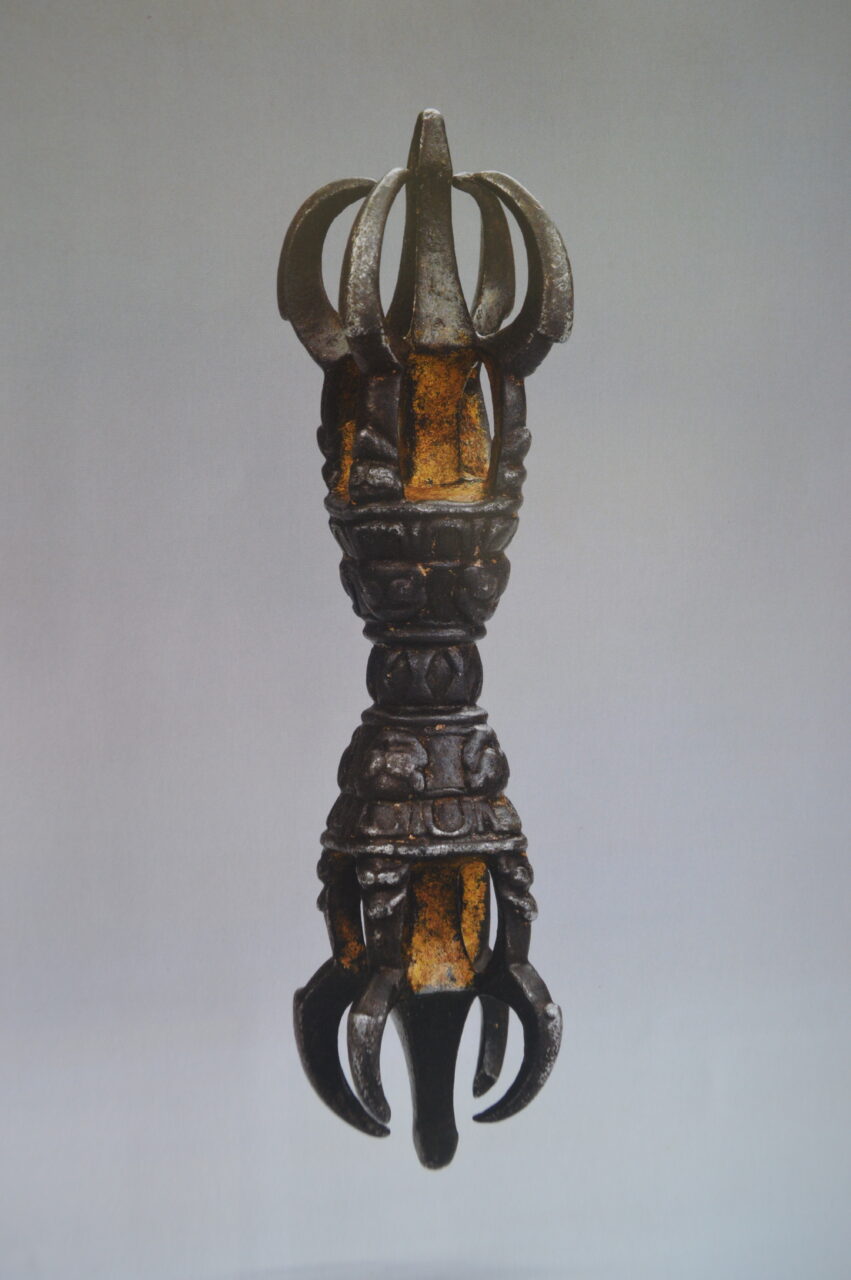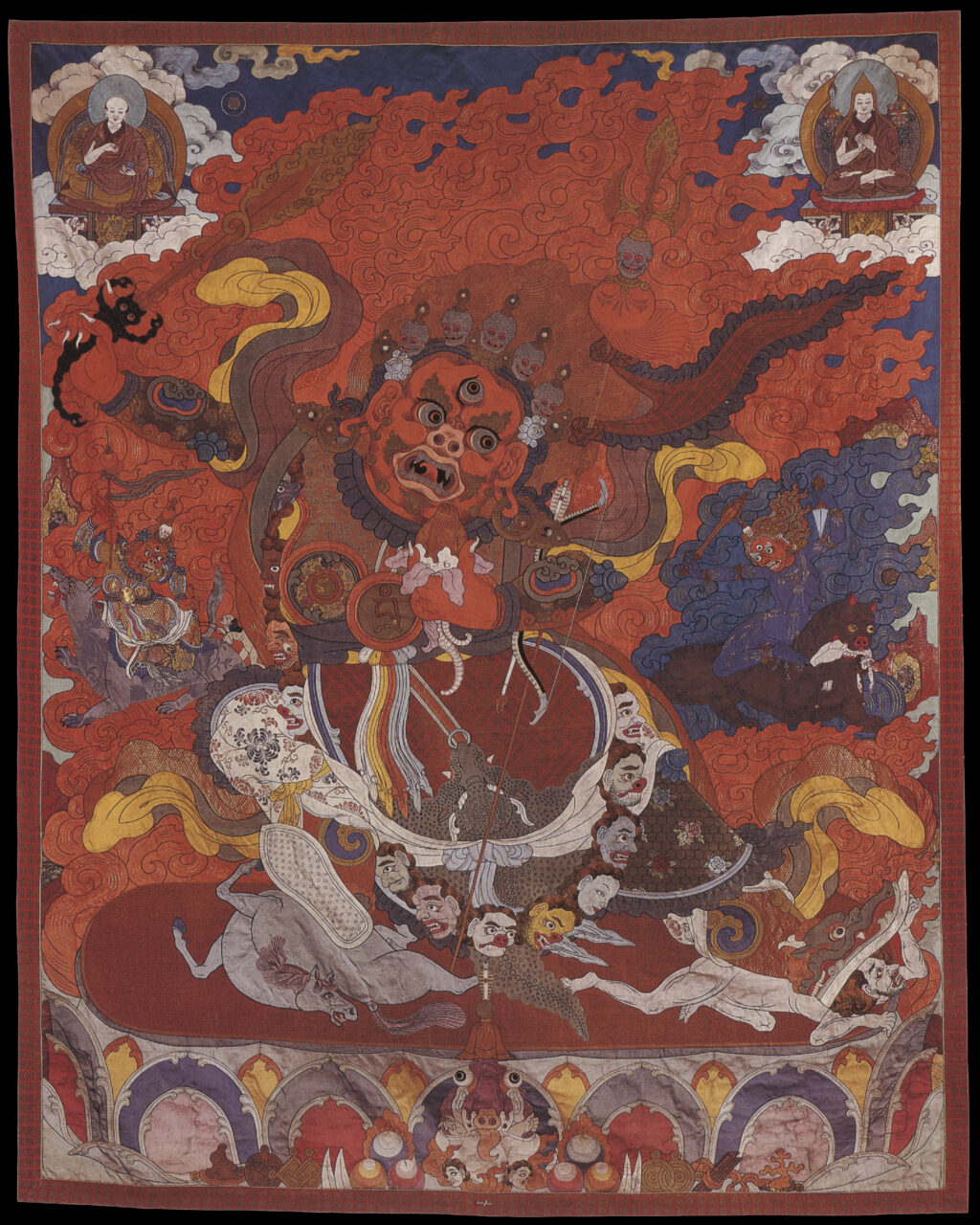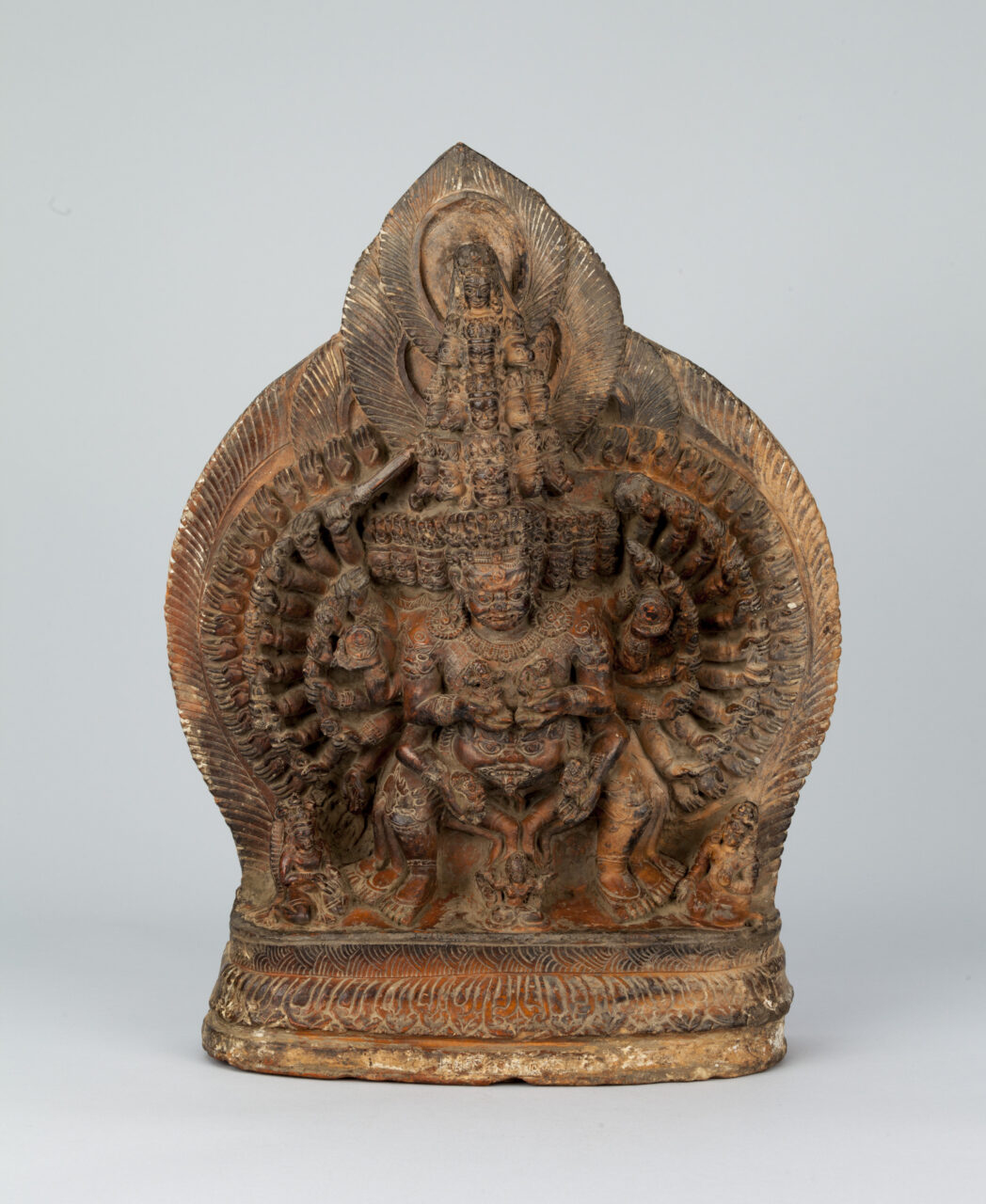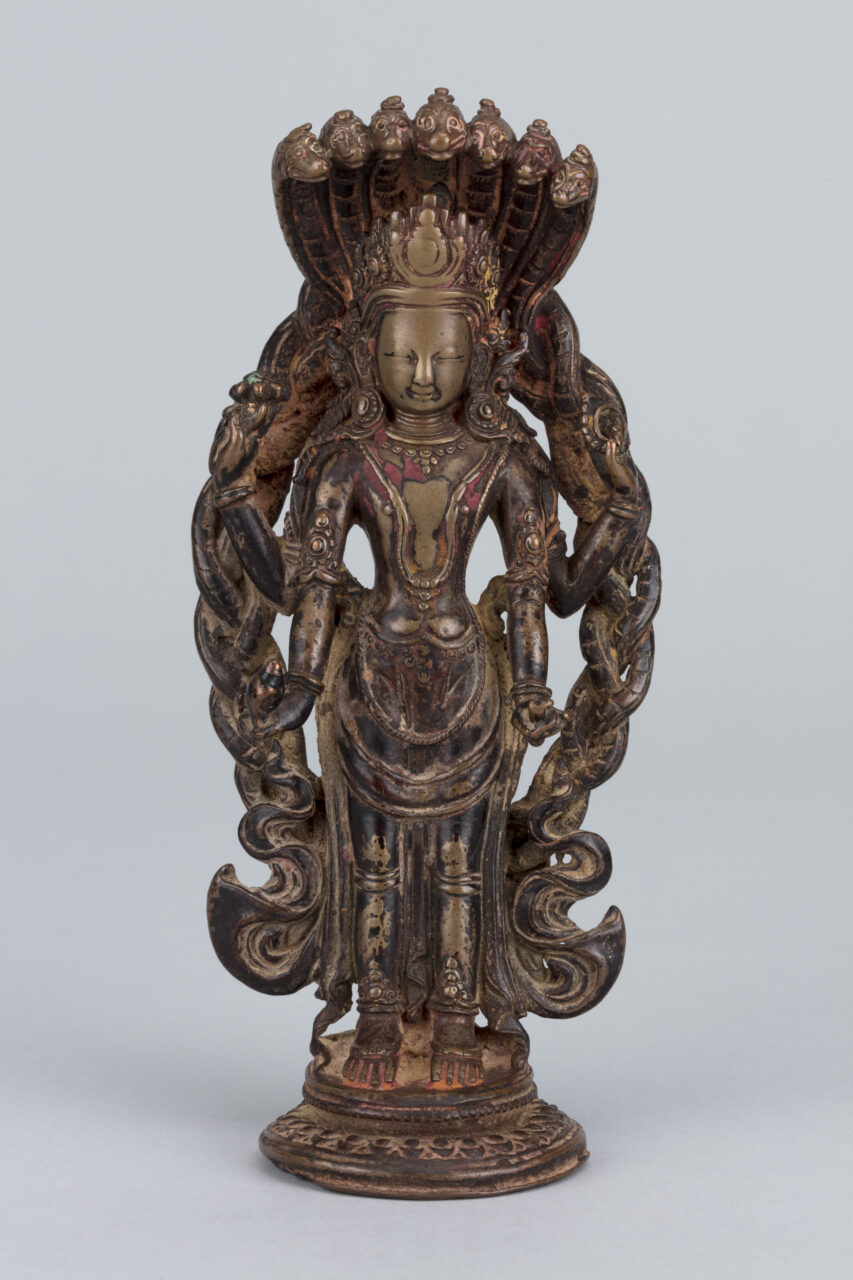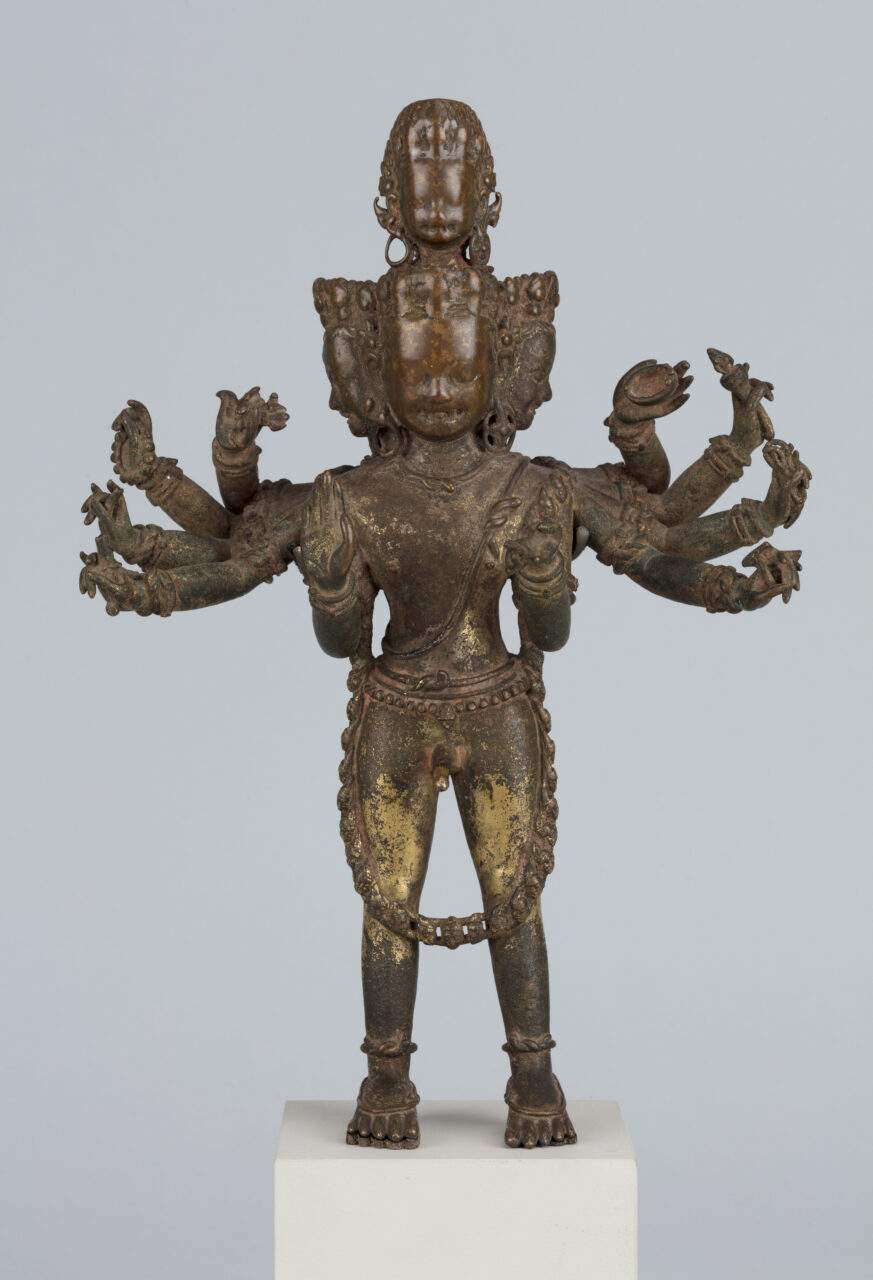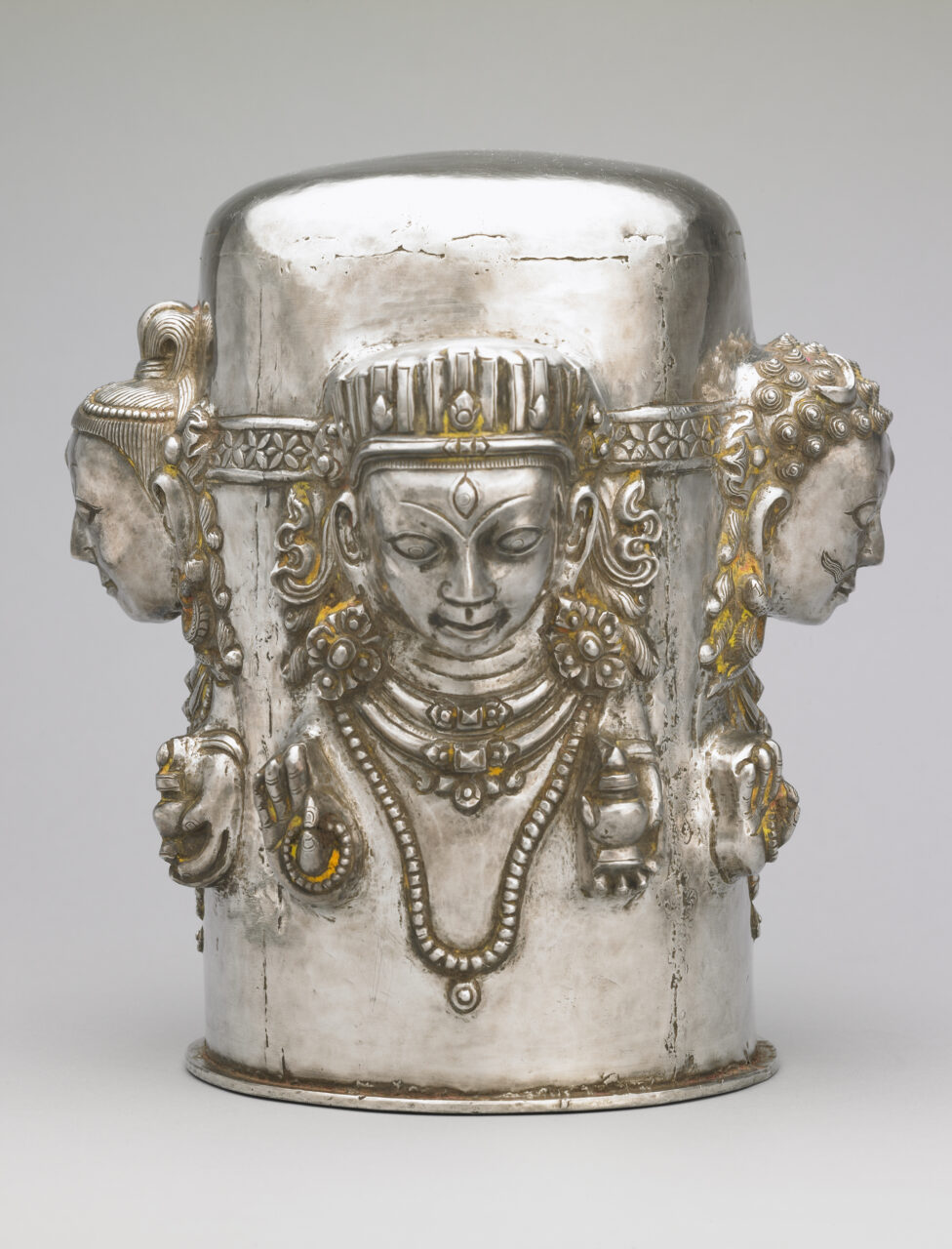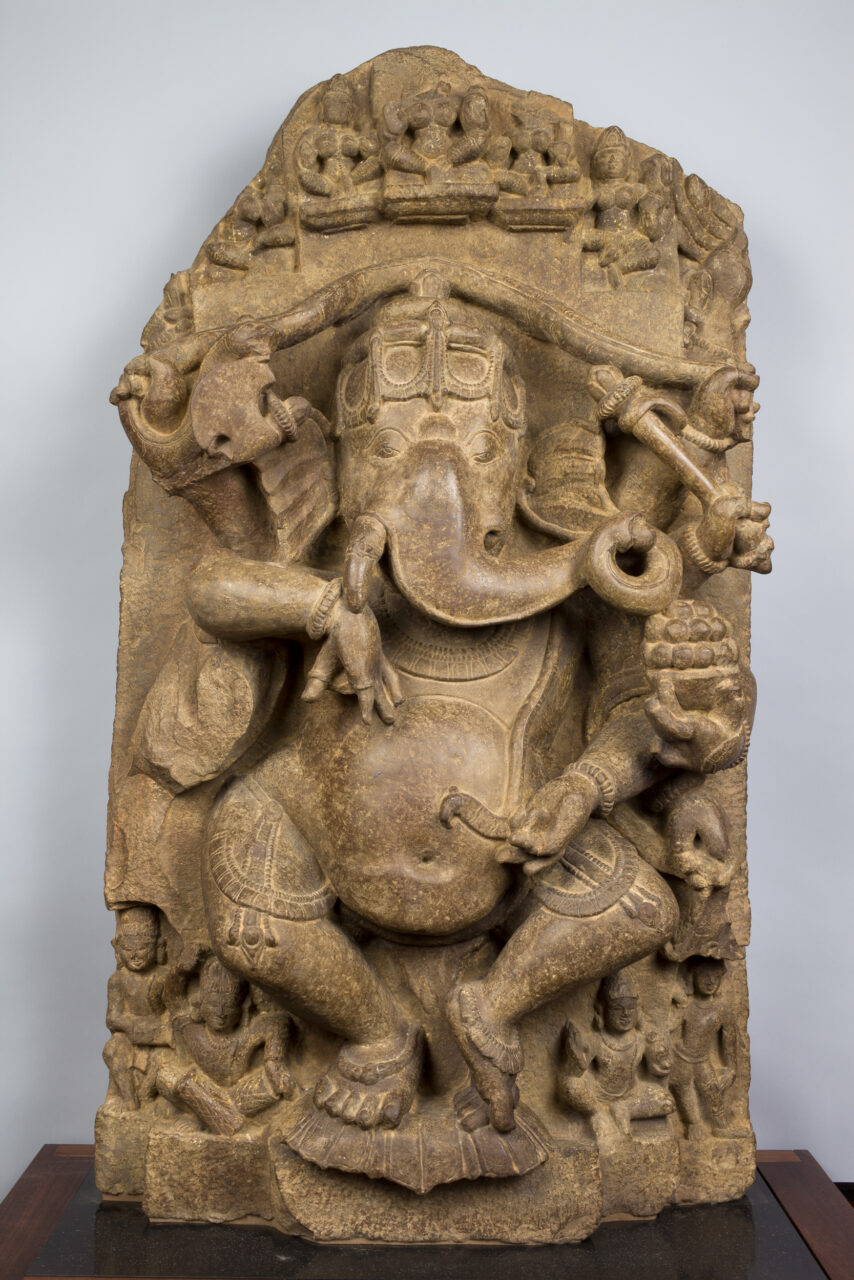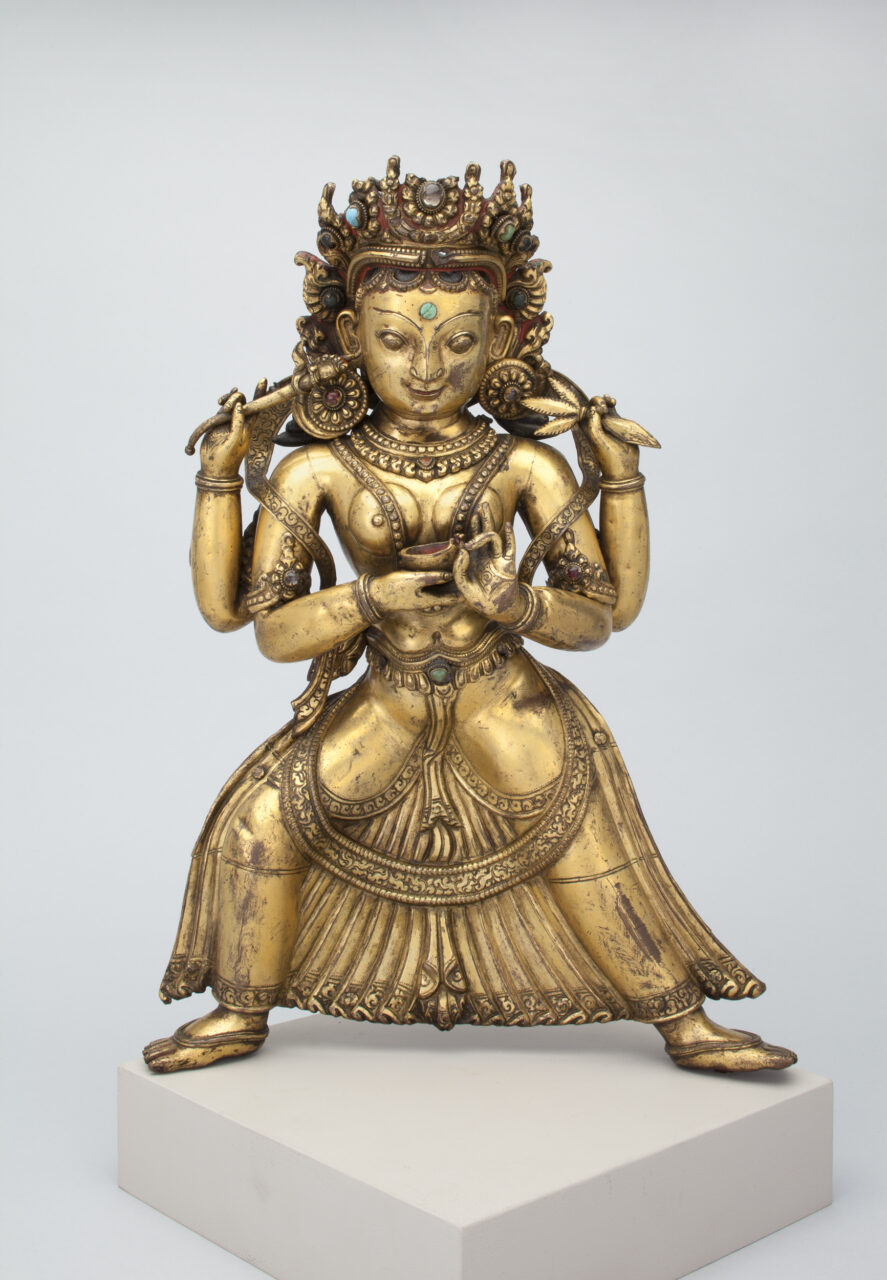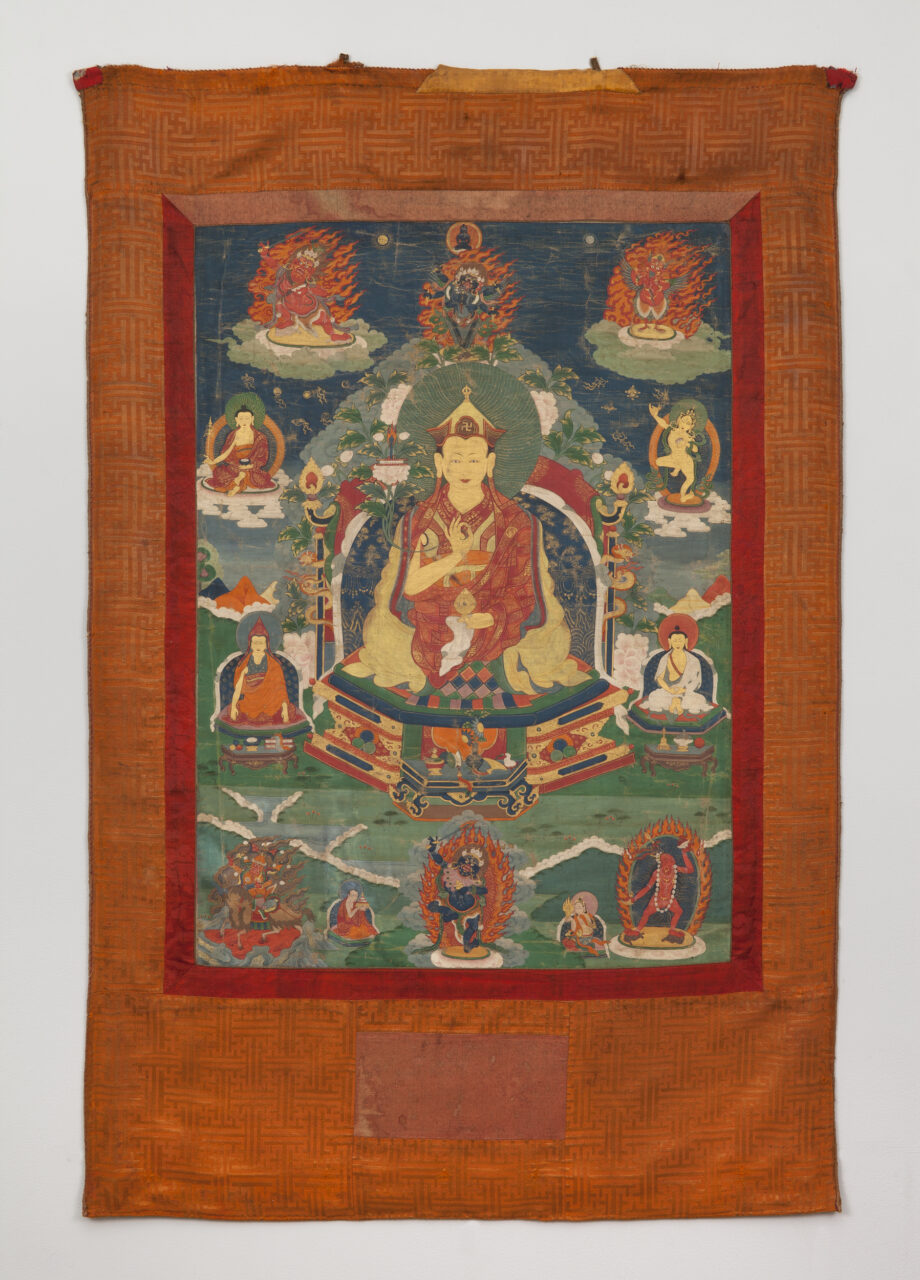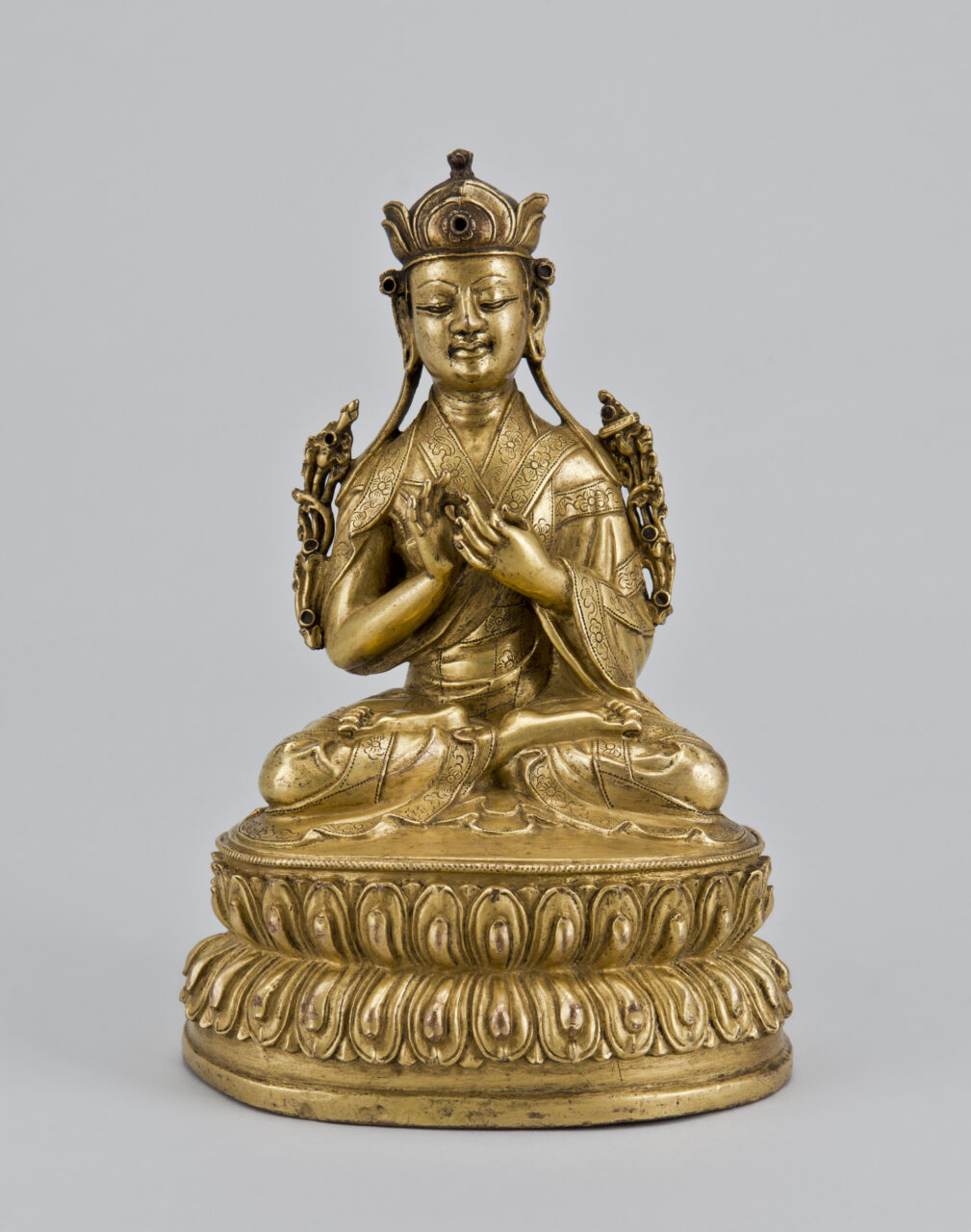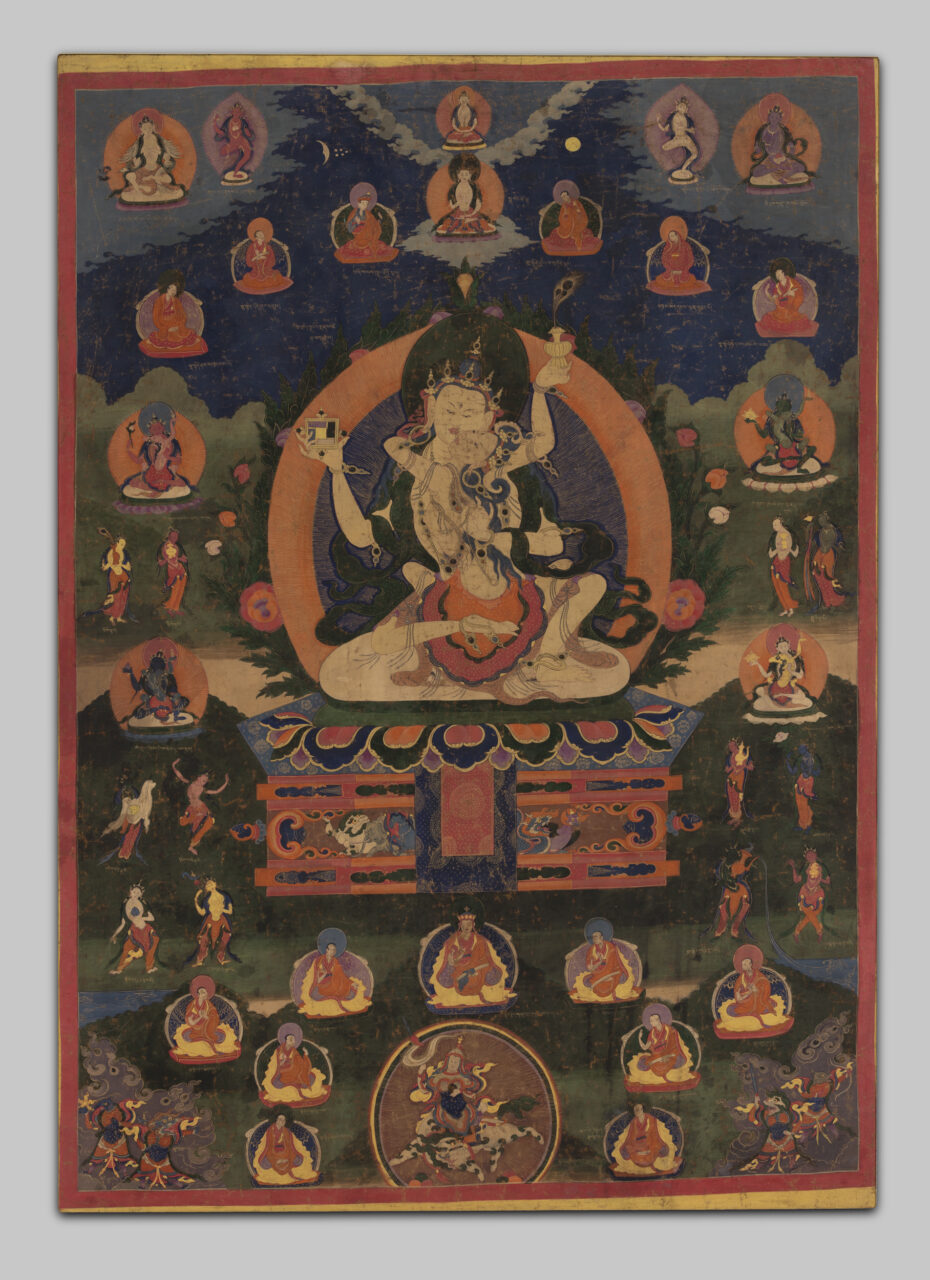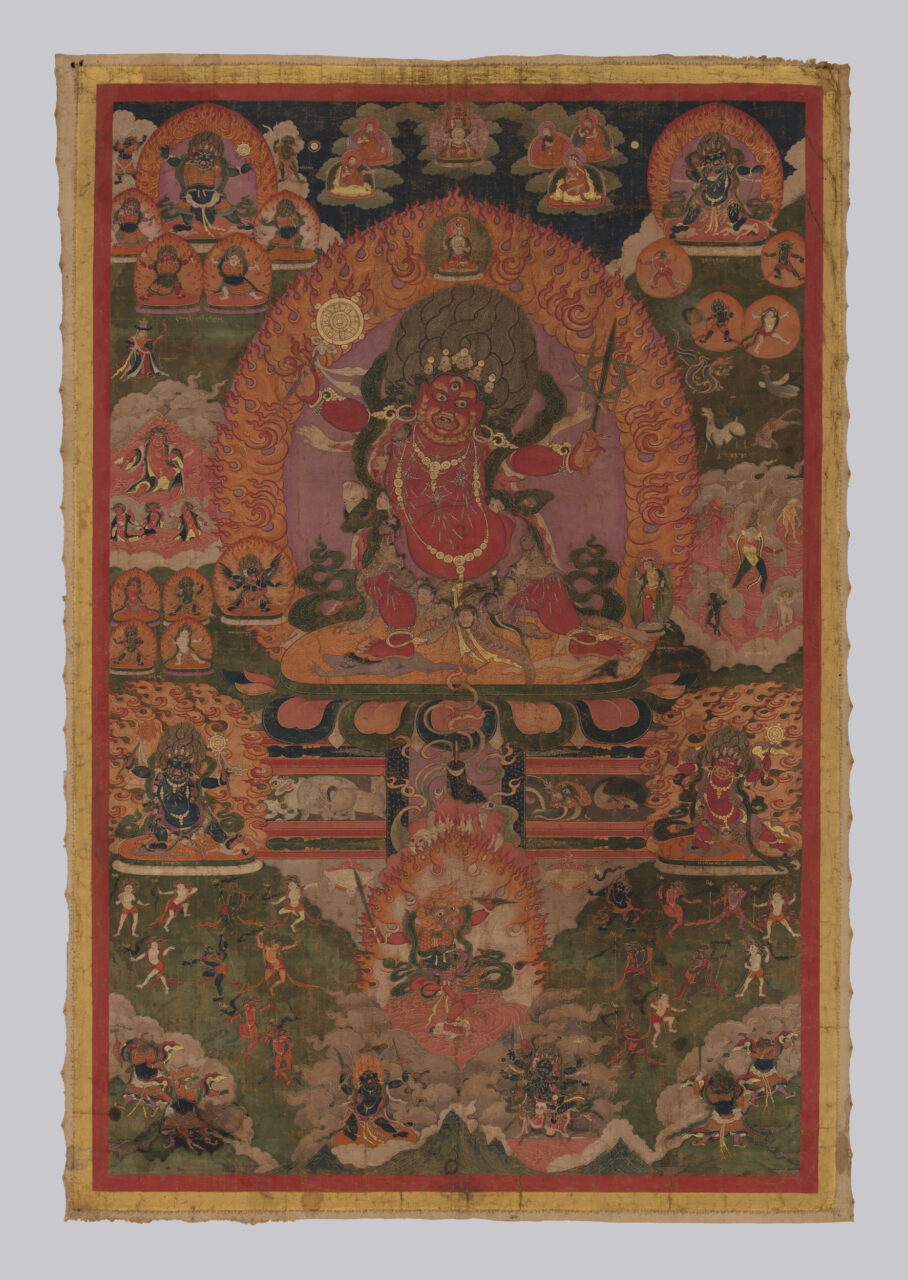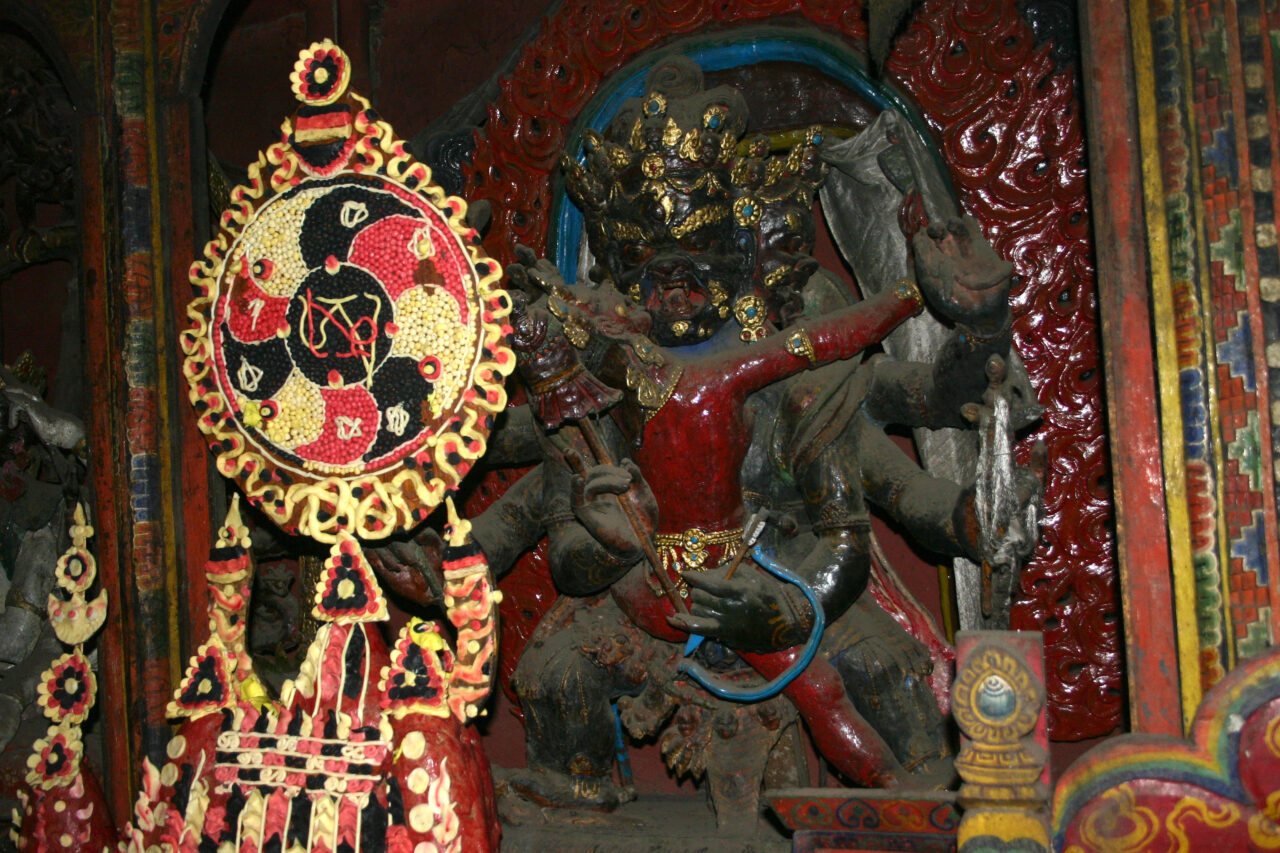Religion is a system of beliefs and practices through which people try to understand, order, and affect existence. In Himalayan regions and culturally connected regions of the main religious traditions are , , and . Buddhism and Hinduism originate in the Indian cultural environment and share many of the cosmological understandings, while Bon is indigenous to Tibetan-Himalayan regions.
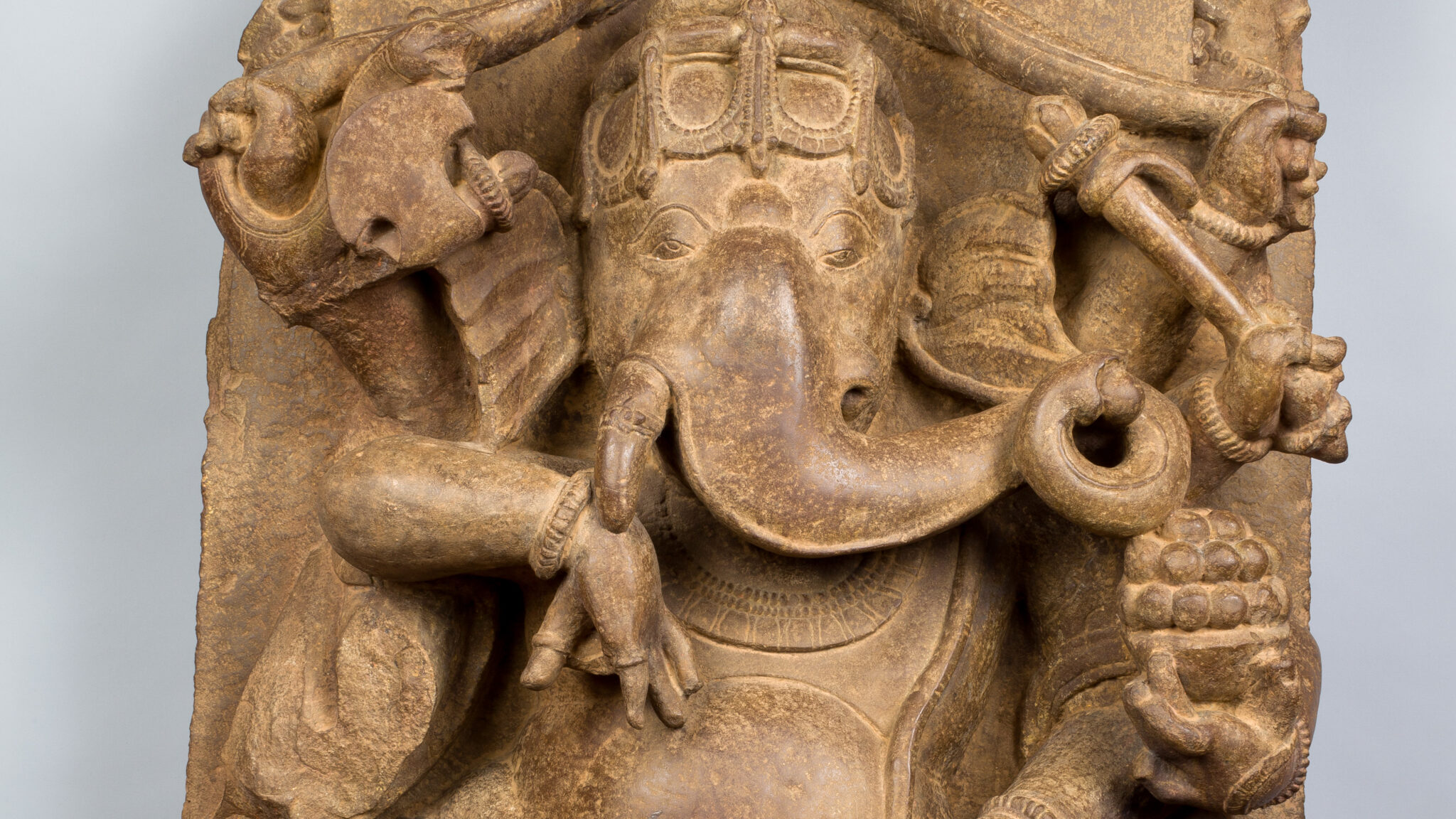
Rubin Museum of Himalayan Art, "Religions," YouTube, January 29, 2025, 3:59, https://youtube.com/EG4MoqeMjg4.
Buddhism Permalink
Buddhism is founded on the teachings of Siddhartha (circa 6th to 4th century BCE) in northern India.
Buddhists believe that sentient life is a cycle of suffering and , but that if one achieves a state of awakening (), it is possible to escape this cycle. Siddhartha Gautama, known as the , reached this state of enlightenment. A form of Buddhism prominent in Himalayan regions known as is a system of practices meant to swiftly transform the mind and body to achieve awakening, or enlightenment, in a single lifetime. The aim is to destroy or transform habits of mind, often by radical, unconventional that require secrecy and direct transmission from teacher to disciple. As expedients for such spiritual development, forms created in art are as varied as the needs of different people and obstacles to overcome.
Vajrayana Buddhism key facts
- A belief in the universal law of cause and effect () and rebirth/reincarnation
- is a fundamental concept in all Buddhist traditions’ perspective on existence and karma
- The Vajrayana or tantric techniques and ritual practices are transmitted through texts (also called ) and through oral instruction from a teacher (guru,
- The centrality of a student and teacher relationship and transmission of teachings is recorded in texts and images
- is a major component of tantric practice, and images are often used as visual and ritual aids
- Rituals use chants (), gestures (), and diagrams ()
- Sexual represents male and female as essential aspects for realizing the nature of reality
- Both lay and monastics practice Tantric Buddhism
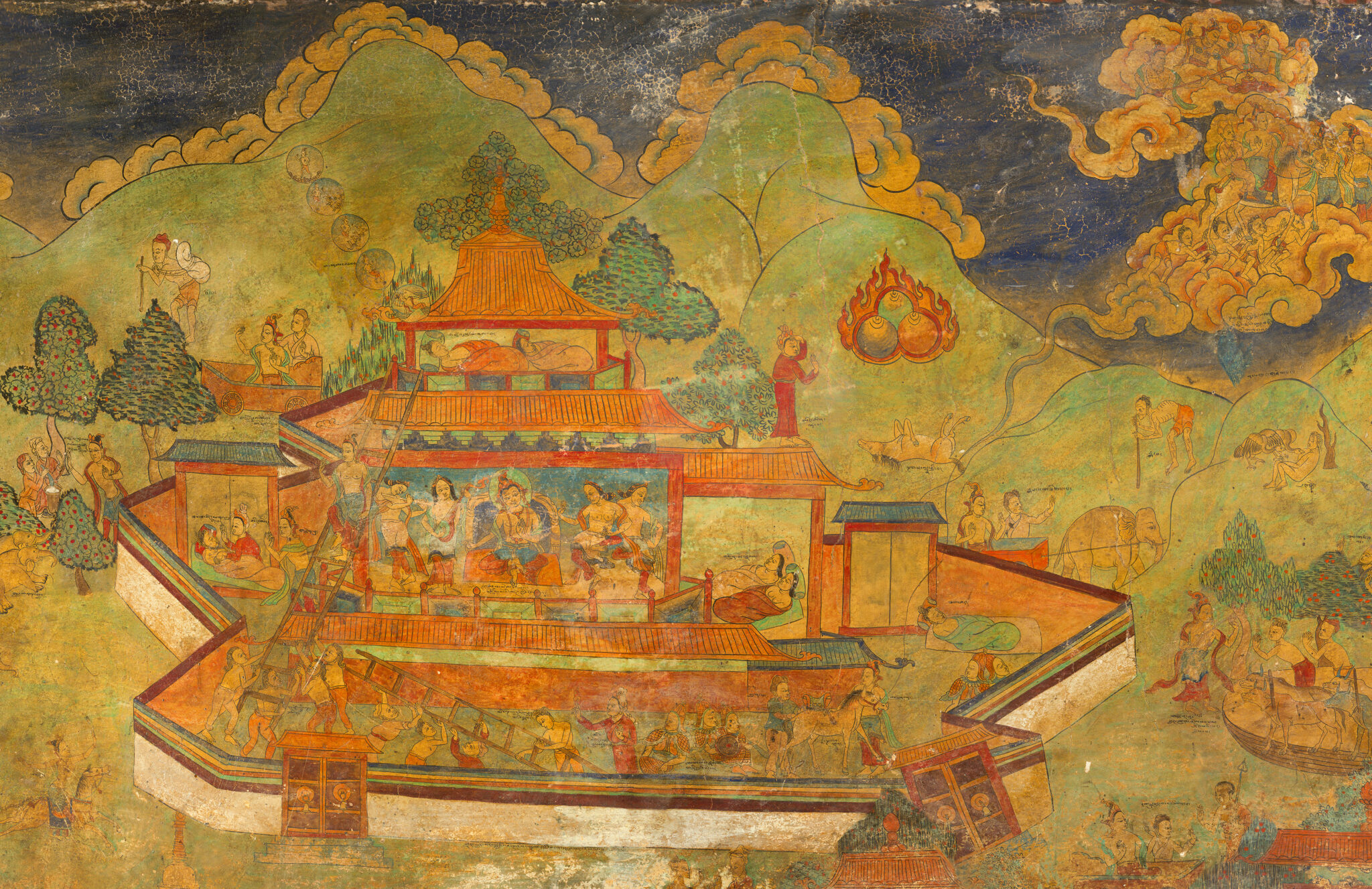
Designed by Taranatha Kunga Nyingpo (1575–1634); Detail depicting the Buddha’s escape from life in the palace, Life of the Buddha Mural, panel 1; Phuntsok Ling Monastery, Tsang region, central Tibet (present-day TAR, China); ca. 1615–1630; photograph by Andrew Quintman and Kurtis R. Schaeffer, 2011
Representations of Buddhist Art and Culture Permalink
Hinduism Permalink
Hinduism is a collection of religious beliefs and practices native to India with no single founder, spokesman, or prophet. Its origins are mixed and complex. One strand can be traced back to the sacred literature of the Aryans, the , which consist of hymns in praise of as personifications of nature. Another strand drew on the beliefs prevalent among groups of indigenous peoples, especially the faith in the power of the mother goddess and in the efficacy of fertility symbols.
Moksha (liberation) is the ultimate spiritual goal of Hinduism. The goal is to reach detachment from the feelings and perceptions that tie one to the world, leading to the realization of the ultimate unity of things—the soul (atman) connected with the universal (Brahman). To get to this point, one can pursue various paths: the way of knowledge, the way of appropriate actions, or the way of devotion.
Hinduism Key facts:
- A belief in many gods, which are seen as manifestations of a single unity. These deities are linked to universal and natural processes.
- A devotional preference for one deity while not excluding or disbelieving others
- A belief in the universal law of cause and effect (karma) and reincarnation (For examples, see these Rubin collection objects: 1, 2, 3, 4, 5).
- A belief in the possibility of liberation and release (moksha) by which the endless cycle of birth, death, and rebirth () can be resolved
- Its present-day expression, emphasizes the supremacy of the god , the god (seen in these Rubin collection objects: 1, 2), and the goddess (literally, power).
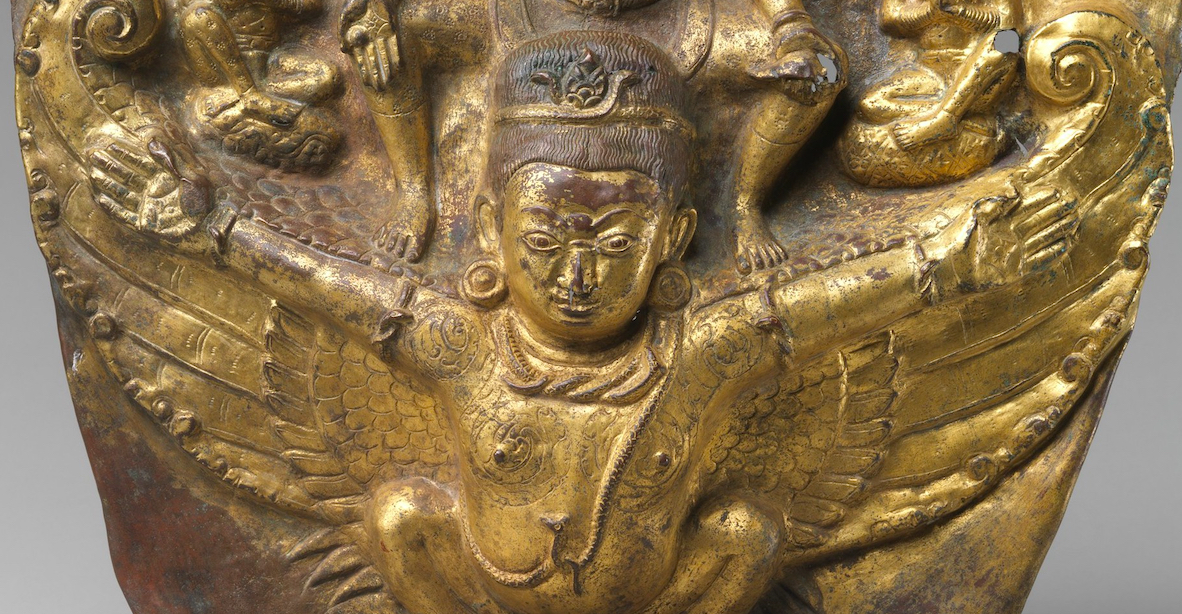
Garuda, detail from Vishnu Riding on Garuda; Nepal; The Metropolitan Museum of Art, New York; Zimmerman Family Collection, Purchase, Lila Acheson Wallace, Jeffrey B. Soref and Natalie Soref Gifts, 2012; 2012.463; CC0 – Creative Common (CC0 1.0)
Representations of Hindu Art and Culture Permalink
Bon Permalink
Bon is a collection of indigenous traditions that include: ancient pre-Buddhist religion of Tibet; Yungdrung Bon, an organized monastic system developed in a dialogue with Buddhist traditions; and various cults with mythic narratives and rituals for the protection and prosperity of local communities.
Its followers believe that Bon religion derives from the teachings of the legendary founder, Shenrab Miwo. Yungdrung Bon shares with Buddhism the techniques and principles recorded in their sutras, tantras and philosophical systems. However, its cosmological concepts and divinities predate the arrival of Buddhism and share with ancient Bon a range of non-Buddhist rituals.
The land from which their teachings came was Zhangzhung, once an actual kingdom in the western part of the Tibetan plateau and beyond. Bon’s religious system attributed to a single founder-figure may have also incorporated several sources from India, Central Asia, Tibetan-Himalayan regions, and China.
Bon key facts:
- Relationship to and control over a natural world is an important foundational principle of cosmological view. (For an example, see this Rubin collection object: 1)
- Although Bon predates Buddhism’s arrival in Himalayan regions and Tibet, it defined itself in relation to Buddhist traditions. (For examples, see these Rubin collection objects: 1, 2)
- Relies on ritual activities
- Iconography draws on similar forms found in . (For examples, see these Rubin collection objects: 1, 2, 3)
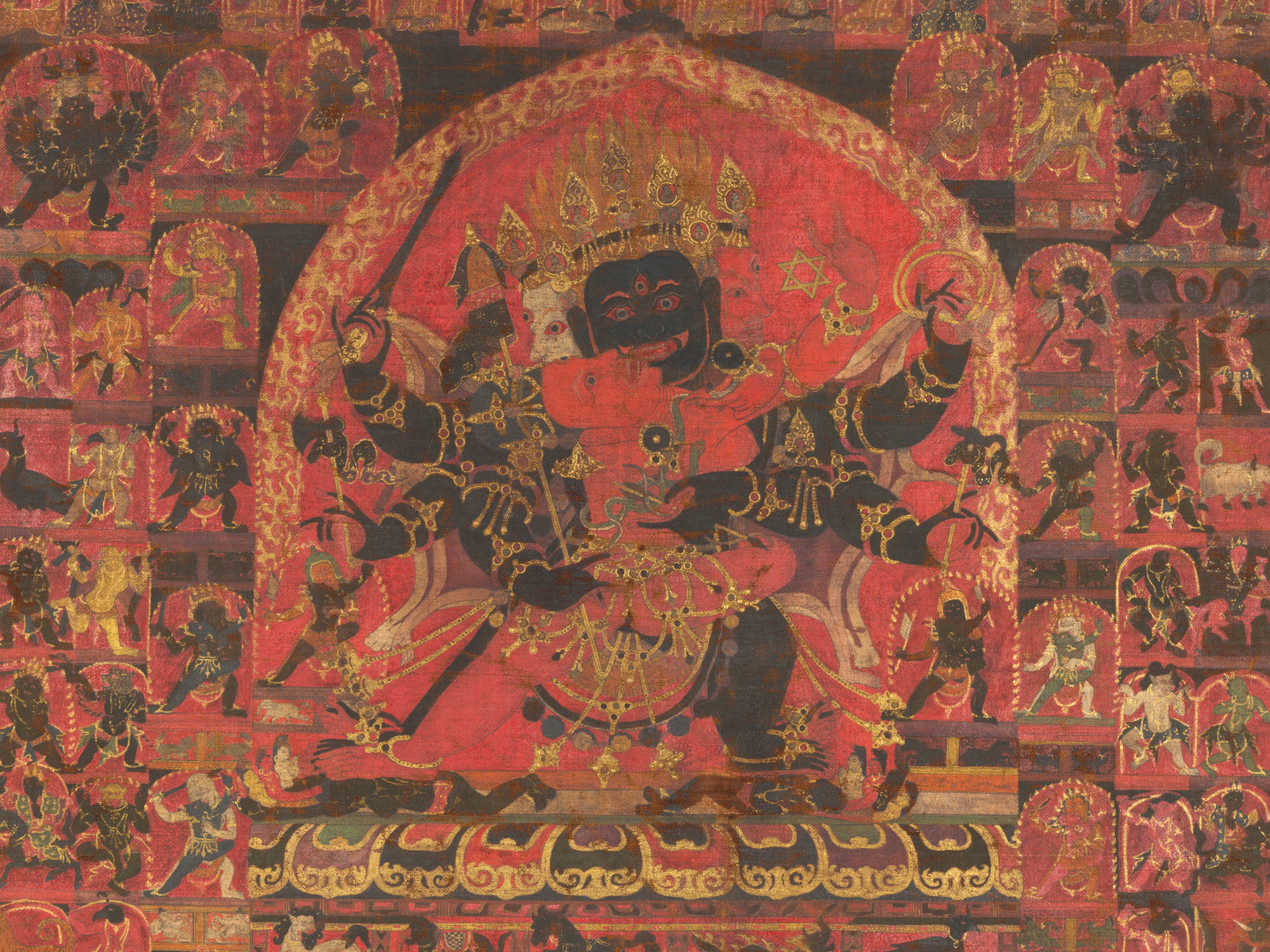
Bon Deity Trowo Tsochok Khagying (detail); Tibet; 15th century; distemper, ink, gold on cloth; 31 × 26 in. (78.7 × 66 cm); The Metropolitan Museum of Art, New York; Gift of Carlton Rochell, in honor of John Guy, and in celebration of the Museum’s 150th Anniversary, 2018; 2018.890; CC0 – CREATIVE COMMONS (CC0 1.0)
Representations of Bon Art and Culture Permalink
Buddhism, Hinduism, and Bon share cultural environments. Buddhism and Hinduism in India and the Himalayas and likewise Buddhism and Bon in Tibet and the Himalayan regions developed in dialog and competed with each other. Although they may have common visual language, these are distinct religious systems of belief. While there is a great deal of religious diversity in Himalayan regions and the culturally connected traditions of Inner Asia, Buddhism is often the common thread that ties these different cultures together.
Glossary Terms Permalink
Tibetan Buddhism
Historically, Tibetan Buddhism refers to those Buddhist traditions that use Tibetan as a ritual language. It is practiced in Tibet, Mongolia, Bhutan, Ladakh, and among certain groups in Nepal, China, and Russia and has an international following. Buddhism was introduced to Tibet in two waves, first when rulers of the Tibetan Empire (seventh to ninth centuries CE), embraced the Buddhist faith as their state religion, and during the second diffusion (late tenth through thirteenth centuries), when monks and translators brought in Buddhist culture from India, Nepal, and Central Asia. As a result, the entire Buddhist canon was translated into Tibetan, and monasteries grew to become centers of intellectual, cultural, and political power. From the end of the twelfth century, Tibetans were exporting their own Buddhist traditions abroad. Tibetan Buddhism integrates Mahayana teachings with the esoteric practices of Vajrayana, and includes those developed in Tibet, such as Dzogchen, as well as indigenous Tibetan religious practices focused on local gods. Historically major traditions of Tibetan Buddhism are Nyingma, Kagyu, Sakya, and Geluk.
Newar Buddhism
The Newar People of the Kathmandu Valley of Nepal retain the unbroken traditions of Mahayana and Vajrayana Buddhism south of the Himalayas, preserving many ritual practices and Sanskrit-language texts that have been lost elsewhere. Celibate monasticism is no longer practiced among the Newars, but instead Buddhist ritualists are divided into two castes. One is the Shakyas, temple-priests who maintain ancient urban monasteries (Newar: bahas, bahis) as places of worship. The other is the Vajracharyas, tantric specialists who perform rituals at communal festivals and important life events. The Svayambhu Stupa is the most important ritual center for Newar Buddhists and the center of the Kathmandu Mandala. Today many Newars also practice Theravada and Tibetan Buddhism.
In Vajrayana Buddhism, a Vajracharya is a general term of respect for a teacher or tantric master who gives teachings and abhisheka initiations. In Newar Buddhism, Vajracharya is a specific caste of non-celibate ritual professionals, who make a living performing tantric rituals on behalf of members of the community.
Vajrayana is one of the three great doctrinal divisions of Buddhism, along with Theravada and Mahayana. Vajrayana can be understood as tantric Buddhism. Historians debate when Vajrayana first appeared, but it was clearly understood as a separate tradition by the eighth century CE, and most of its major texts were written by the twelfth century. Vajrayana ritual and art are characterized by visualization, deity yoga, wrathful deities, mandalas, mantras, initiations and empowerments (abhisheka), and ritual sexual union. These teachings are transmitted in texts called tantras and sadhanas, as well as through secret instructions (Skt. upadesha) from a teacher. Essentially all Himalayan Buddhist traditions integrate Mahayana and Vajrayana practices.
Tantra was a religious movement in India around the fifth to seventh centuries, and its practices are part of Buddhism and Hinduism. The word tantra also refers to texts which transmit tantric practices. In Buddhism, tantra is also called Vajrayana, “The Vajra Vehicle.” Tantric ritual and art are characterized by deity yoga, mandalas, mantras, abhisheka (initiation), wrathful deities, and ritual sexual union. In Hinduism, tantrism was often associated with the worship of Shiva and various goddesses (shakti). A practitioner of tantra is called a “tantrika.” Tantra is also a genre of texts that have been variously categorized. Most common is the division of tantras into four categories: Kriya Tantra, Charya Tantra, Yoga Tantra, and Highest Yoga Tantra.
Hinduism and Buddhism both hold that actions (Skt. karma) have inevitable results which may take a shorter or longer time to occur. Mental, verbal, and physical actions all have positive or negative consequences and are considered karma. Depending on conditions, karma can manifest results either in this or future lives. Karma directly relates to the idea of reincarnation, and positive karma can also create religious merit and lead to a better rebirth, while negative actions, or karma, result in worse experiences in the present and future lives. Buddhists strive to achieve enlightenment to escape this cycle of karmic action and consequence.
merit
In Buddhism, merit is accumulated positive karma, or positive actions, that lead to positive results, such as better rebirths. Buddhists gain merit by reciting mantras, donating to monasteries and those in need, performing pilgrimages, commissioning artworks, reproducing and reciting Buddhist texts, and other deeds with good intentions. It is believed that merit can also be transferred to others through rituals performed to gain merit for deceased family members help them achieve a better rebirth. Merit making is an important motivation for positive ritual action, and is a prerequisite for success of religious and even secular activity.
visualization
Visualization is a process of using one’s imagination to transform reality. A practitioner imagines in their mind’s eye the deity with the associated enlightened qualities they wish to embody themselves. When focused on a specific deity, visualization and related ritual practices are called deity yoga. Visualization is a fundamental element of such practices described in texts known tantras, which define a system of meditation and ritual meant to transform the mind and body.
Hinduism
Hinduism is a collection of religious beliefs and practices comprising a major Asian religion, practiced principally on the Indian Subcontinent and parts of Southeast Asia. Although certain practices may have their roots in the ancient Indus Valley civilization (~3300–1300 BCE), the earliest decipherable texts of Hinduism are the Vedas, ritual-mythological hymns and instructions for fire-sacrifice from around 1500–900 BCE. From around 800 to 300 BCE, new thinkers emphasized philosophical ideas like ritual union with the deity Brahman, or meditation and asceticism in the forest. One of these thinkers was Siddhartha Gautama, the founding teacher of Buddhism. Hindu temples appeared from the medieval period onward, dedicated to gods like Brahma, Vishnu, Shiva, and Mahadevi. There are also tantric forms of Hinduism, which emphasize transgressive practices and yogic ritual.
The Vedas are an ancient body of Sanskrit-language texts, the earliest decipherable texts of the religion we now call Hinduism. There are traditionally four Vedas:
- The Rigveda is the oldest of the Vedas, composed in the late second millennium BCE. It contains hymns (Skt. mantras) to gods like Indra, Vishnu, and the fire-god Agni.
- The Samaveda contains hymns similar to those in the Rigveda, although of a later date.
- The Yajurveda contains mantras to be spoken during fire sacrifices (Skt. yagnya).
- The Atharva Veda contains incantations for a variety of medical and exorcistic purposes.
Each Veda also contains subsidiary books, often written centuries later, which contain ritual instructions and philosophical discussions.
In Indian religious traditions, darshan means a glimpse or sight of the deity, often during pilgrimage, visit to the temple, or when the deity is brought out from a temple during a festival. It is believed that in these encounters, the deity also sees the worshipper via the consecrated statue. In Buddhist traditions, darshan is often interpreted as blessing, and sometimes can also refer to a meditative visualization or vision of a buddha or deity.
In Buddhism and Hinduism, samsara is the phenomenal world in which we live, and the cycle of birth, death, and rebirth. In Buddhism, samsara refers to the six realms of existence in which beings can be born according to their karma: as hell beings, hungry ghosts, animals, humans, demi-gods (Skt. asura), and gods. The central goal of Buddhism is to escape the suffering of samsara by achieving nirvana, a state beyond this cycle of rebirths.
In Hinduism, Shakti is the divine female power, considered to be the active, creating agent in the power of the gods. Goddesses like Mahadevi, Kali, Durga, and Parvati are all considered to be aspects of this fundamental force. The traditions that worship these goddesses are called “Shaktism,” and a devotee is called a “Shakta.”
Bon is an indigenous religion of Tibet. Originally, Bon were a group of non-Buddhist ritual specialists in the court of the Tibetan emperors. From the eleventh century onward, an organized religion called Yungdrung Bon, or “Eternal Bon,” took shape. Yungdrung Bon developed in dialogue with Buddhism, incorporating deities called buddhas, scriptures modeled on the Buddhist canon, monks, and the establishment of monasteries. Followers of Yungdrung Bon trace their own origins to a founder called Tonpa Shenrab, who arrived from the semi-mythical land of Zhangzhung in western Tibet. The word “Bon” can also refer to the many non-organized indigenous religious practices, including the worship of mountain deities and making namkha. A follower of Bon is called a Bonpo.
deity
Different Asian religious traditions posit different types of divine beings. Hindus generally believe in an all-encompassing God-like being, called Brahman. They also believe in a variety of other gods (deva), including Brahma, Vishnu, and Shiva. Early Buddhists denied the existence of a single, all-powerful creator god. Nevertheless, they always recognized a variety of powerful spirits, like gandharvas and nagas. Mahayana Buddhists came to see bodhisattvas as beings of enormous power, and buddhas themselves as cosmic beings with the ability to create entire universes. Buddhist and Bon traditions in Tibet worshiped a variety of other gods (Tib. lha), like the mountain gods, or gods of the land. According to Buddhist tradition, enlightened deities are seen as beyond the cycle of death and rebirth, whereas gods (including Hindu gods) are not.
mountain gods
In many Himalayan and Inner Asian cultures some mountains and other natural forces are personified as gods, and mountains are places where gods reside. Tibetans understand some mountains to be mandala-palaces of Bon or Buddhist deities. Other mountains are the homes of fierce warrior-gods who have been tamed and bound by oath to protect Buddhism and the land, for instance Kula Khari, who have the power to harm or grant prosperity to local communities.
An abhisheka is a consecration or anointment ritual. In Vajrayana Buddhism, abhisheka rituals are performed to initiate practitioners into the practices focused on a certain deity. These ceremonies often involve anointing the heads of practitioners with water, meditative visualizations, making vows, chanting mantras and being introduced into a mandala. Hindu priests perform abhisheka rituals on statues, either to invite the deity to reside there, or to wash the statue and worship the deity that inhabits it. Historically, abhishekas were also performed to coronate Hindu kings.




